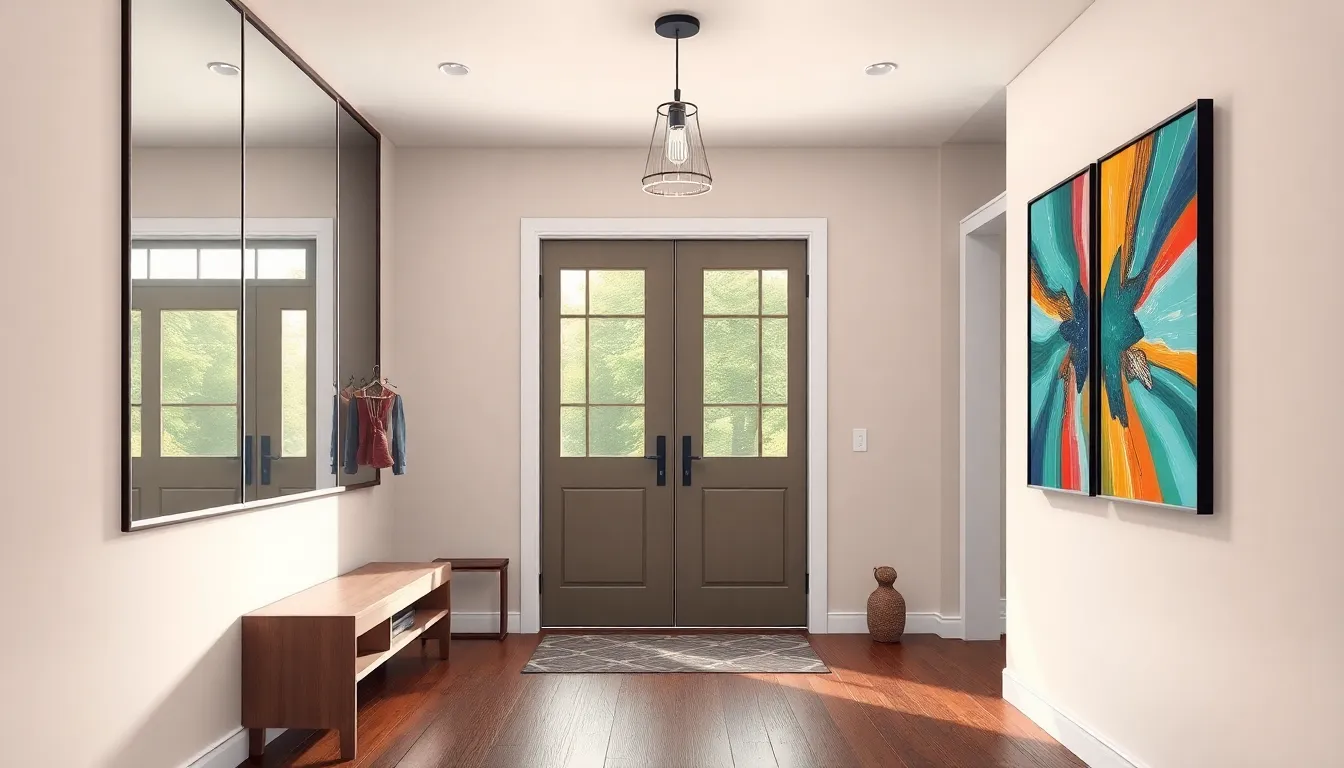Split-level homes often get a bad rap, but with the right renovation ideas, they can transform into stunning, functional spaces that even your neighbor’s jaw will drop at. Picture this: a cozy nook that doubles as a reading corner or a sleek kitchen that invites family gatherings. It’s all about embracing the unique layout and unleashing creativity.
Table of Contents
ToggleUnderstanding Split Level Homes
Split-level homes emerged in the mid-20th century, showcasing distinct architectural features. The design incorporates multiple levels within the same structure, typically featuring short sets of stairs that separate different living areas. This layout allows for increased privacy between spaces, differentiating areas like bedrooms from living rooms and kitchens.
Many people appreciate split-level homes for their efficient use of space. Each level often has a specific purpose, offering residents a unique flow of movement. This design encourages a cozy atmosphere, making it ideal for families needing separate zones for activities.
Renovating split-level homes requires creativity. Homeowners can maximize natural light by adding large windows or skylights on upper and lower floors. Consider the benefits of open-concept designs; these can bridge multiple levels and enhance connectivity between spaces.
Investing in new finishes can transform outdated styles. Modern fixtures and color palettes breathe fresh life into interiors, while maintaining the home’s original charm. Enhancing curb appeal through landscaping and exterior updates can also significantly increase value.
Maintenance of split-level homes presents challenges. Homeowners might encounter issues such as uneven flooring or aging staircases, which need attention. Ensuring proper insulation throughout each level contributes to energy efficiency during seasonal changes.
Overall, split-level homes have untapped potential. By focusing on thoughtful design and renovation, homeowners can turn these peculiar layouts into appealing, functional spaces that meet contemporary needs.
Popular Split Level Home Renovation Ideas

Split-level homes offer unique opportunities for renovation that enhance both style and function. Below are some popular ideas to transform these spaces into modern, inviting areas.
Modernizing the Entryway
Revamping the entryway sets the tone for the entire home. Installing a sleek, modern front door boosts curb appeal. Adding built-in storage solutions, like benches or coat racks, maximizes space efficiency. Incorporating large mirrors reflects light, creating an airy feel. Using fresh paint colors brightens the space and can invigorate moods.
Lighting plays a crucial role, so consider pendant lights or sconces to enhance visibility. Upgrading flooring with durable materials, such as tile or hardwood, contributes to a stylish look. Finishing touches, like artwork or decorative accents, personalize the entryway and invite guests warmly.
Upgrading the Living Room Space
Transforming the living room enhances both comfort and aesthetics. Embracing an open-concept layout fosters better flow between rooms. Consolidating furniture arrangements creates more usable space. Incorporating multi-functional pieces, such as ottomans with storage, further optimizes functionality.
Natural light enhances the atmosphere, so consider larger windows or sliding glass doors. Utilizing contemporary finishes, like sleek cabinetry and modern lighting fixtures, uplifts the overall design. Adding built-in shelving not only showcases decor but also maximizes storage. Introducing soft textiles through rugs and throw pillows can provide inviting textures and warmth.
Enhancing Functionality
Enhancing functionality in split-level homes significantly improves their appeal. Thoughtful design choices create inviting atmospheres while maximizing space.
Creating Open-Concept Layouts
Embracing open-concept layouts transforms split-level homes. Removing non-load-bearing walls opens up living spaces, increasing natural light and flow. This design fosters better connectivity between the kitchen, dining area, and living room. Incorporating large islands in kitchens encourages social interactions during gatherings. Adding glass sliding doors enhances indoor-outdoor transitions, making spaces feel larger and more integrated. Overall, an open-concept approach elevates both aesthetics and functionality, making everyday living more convenient.
Adding Multi-Functional Spaces
Designing multi-functional spaces addresses diverse needs in split-level homes. Creating a home office in an underutilized corner maximizes efficiency and productivity. Forming a play area within living rooms gives children a dedicated space while keeping them within sight. Utilizing built-in shelving provides storage solutions while serving as display areas for decor. Designating guest accommodations in basements or lower levels adds flexibility for hosting. Such multi-functional spaces enrich the home experience, adapting to various lifestyles and enhancing overall usability.
Interior Design Tips for Split Level Homes
Maximizing space in split-level homes requires strategic design choices. Implement open-concept layouts to foster connectivity. Removing non-load-bearing walls allows light to permeate areas and enhances the overall flow.
Incorporate color schemes that create a cohesive visual experience. Soft, neutral tones promote spaciousness, while bolder accents add personality. Selecting the right finishes contributes significantly to the ambiance.
Consider furnishing arrangements that complement the unique levels. Positioning furniture to create distinct conversation areas enhances functionality. Using area rugs can also help define spaces without constructing barriers.
Natural light plays a crucial role in these homes. Adding larger windows or skylights illuminates rooms, promoting a warm atmosphere. Draperies made of lightweight fabrics can further enhance sunlight while providing privacy.
Integrating multi-functional furniture caters to diverse needs. For example, a storage ottoman can serve as both a seat and a place to stow belongings. Choosing pieces that fit multiple roles keeps the interior organized.
When renovating kitchens, central islands serve as both cooking and gathering spots. Opting for open shelving instead of closed cabinets invites an airy feel. Bright, modern fixtures also uplift the overall aesthetic of kitchen spaces.
Lastly, think about creating comfortable outdoor living areas. Using sliding glass doors facilitates easy transitions between indoor and outdoor spaces. Decks or patios designed for relaxation can extend entertaining options beyond the interiors.
Transforming a split-level home into a stylish and functional space is entirely achievable with the right renovation ideas. By embracing the unique layout and focusing on modern finishes homeowners can breathe new life into these often-overlooked properties.
Incorporating open-concept designs and maximizing natural light can create an inviting atmosphere while enhancing the home’s overall appeal. Thoughtful design choices not only improve functionality but also address the diverse needs of family life.
With a little creativity and planning split-level homes can become beautiful spaces that reflect contemporary living while increasing property value. Embracing the potential of these homes opens the door to endless possibilities for comfort and style.



